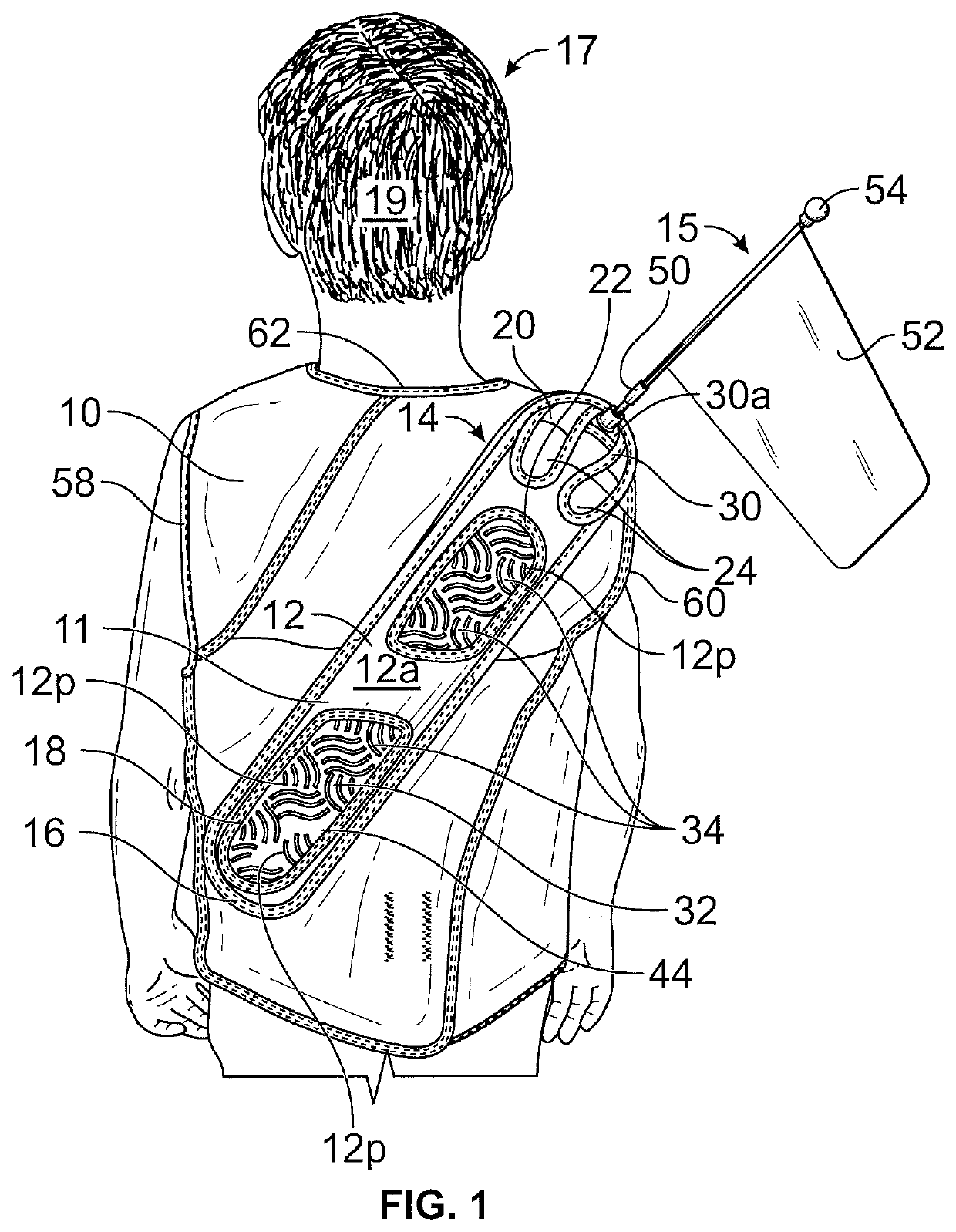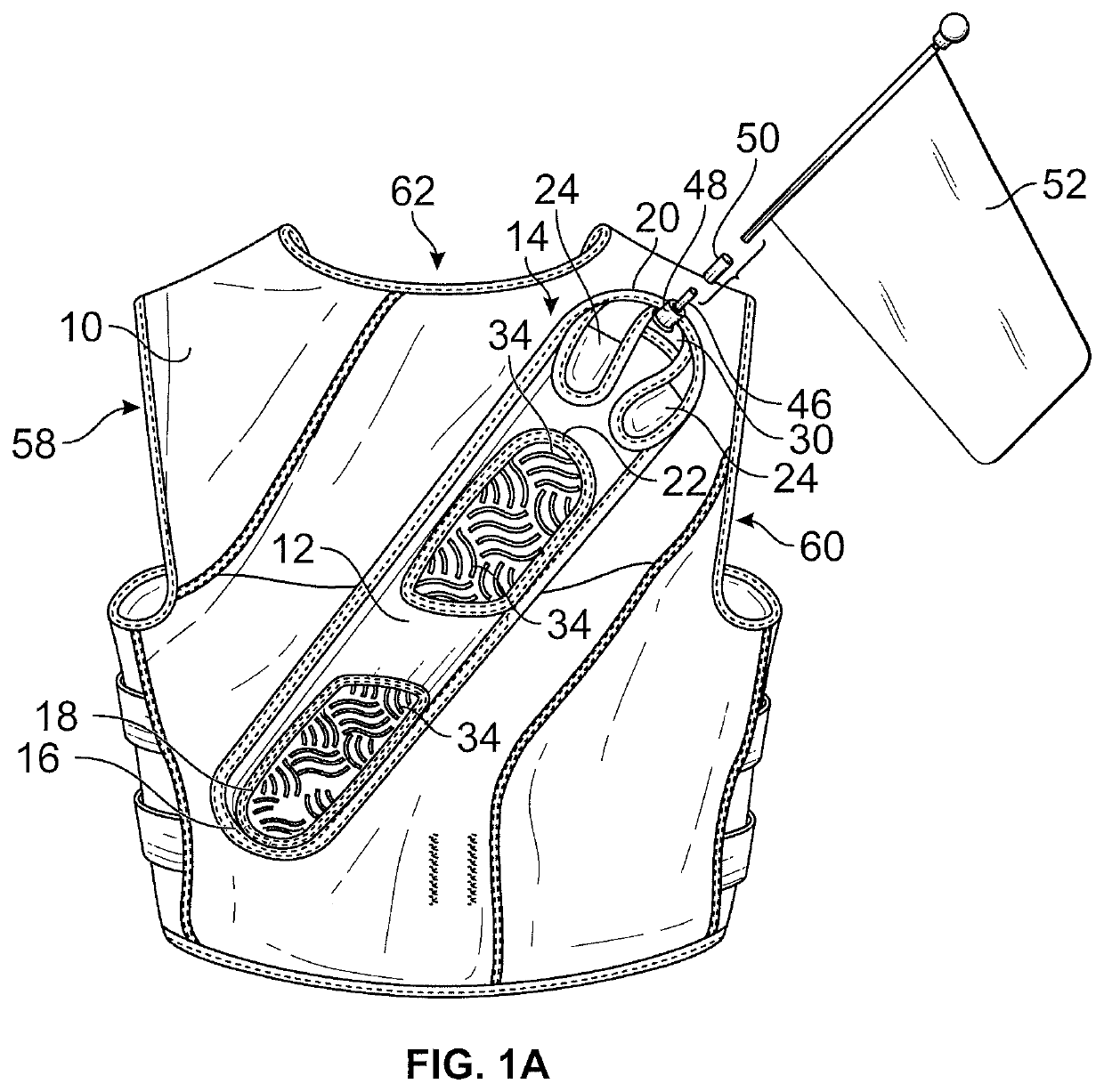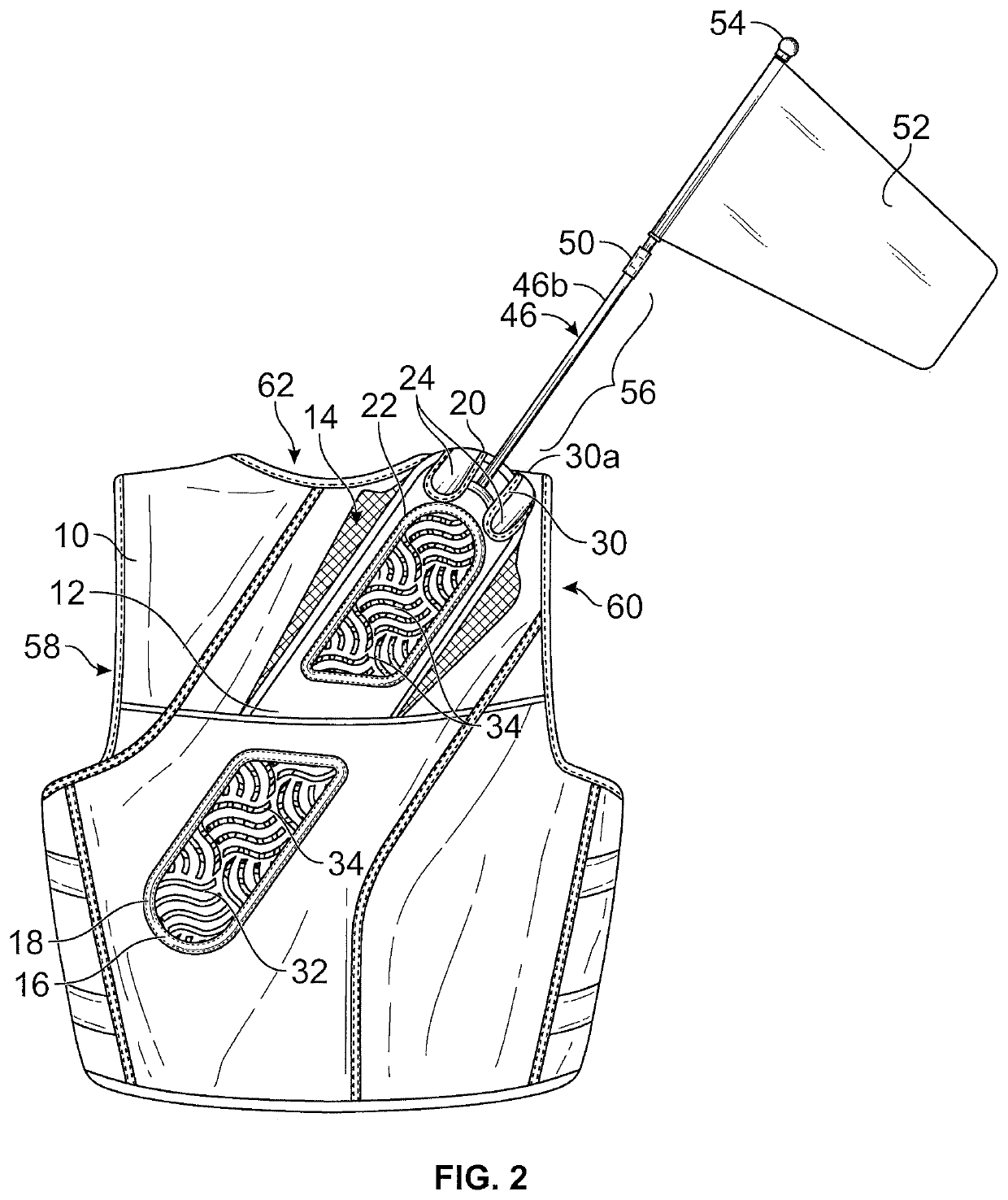[0012]The present invention relates to life vests comprising a flag system used to locate individual users. More particularly, the present invention enables locating an individual wearing a life vest by incorporating a self-adjusting and operating flag system for identification purposes. Specifically, the life vest flag system uses water surrounding the life vest to extend and adjust the height of a visible identifier (such as a flag) relative to the user in order to more easily locate the user. More specifically, the life vest flag system comprises an automatic, height adjustable, buoyant device to improve locating a user in circumstances where visibility may be an issue. For example, the life vest flag system can be used for a variety of activities, including, but not limited to, boating, water-skiing, tubing, and wakeboarding. Toddlers can also use the system when swimming in crowded pools (having different colored and designed visible identifiers) so parents can quickly identify their children.
[0013]One benefit of the present invention is that it is not obtrusive because its design is comfortable, yet still functionally efficient. For example, one objective of the present invention pertains to providing an improved automatic, height adjustable, buoyant device to more efficiently locate a user in circumstances where visibility may be an issue. Another objective of the Applicant's invention is to provide a locating system without hindering a user's comfort level. Another objective of the present invention is to provide a locating system that is highly visible when submerged in waves or inclement weather. Specifically, a benefit of having this functionally efficient, yet non-obtrusive invention is that it truly improves locating a user in all conditions without impeding a user's personal space or comfort.
[0015]The prior art discloses a life vest flag system for locating purposes and a method for the same. However, the Applicant's invention has key structural differences distinguishing it from the prior art. One benefit of the Applicant's invention is that it is structured and designed to functionally withstand larger forces of water. In particular, the system is structured to be enclosed in a pre-set receptacle comfortably positioned at an angle pointing away from the user's personal head space, where the receptacle fully encloses a housing, thereby preventing excess shifting from movement and / or water flow. An additional benefit is that the Applicant's invention implements a more buoyant system because its structure comprises a separate low profile flotation device designed to sit in a position at the bottom of the housing, which allows the use of a low-profile, more compact housing comprising surfaces that fully enclose the flotation device. Specifically, in one embodiment, the housing comprises two flat surfaces and a small passage for a thin mast / pole / rod, where both flat surfaces comprise of custom wave-like holes enhancing the water flow. Furthermore, the small passage for the thin mast / pole / rod is significantly smaller in structure and profile than the housing itself. Another benefit is that the mast / pole / rod has a stopper at the top, outside of the housing to prevent an excess retraction and damage to the flotation device. These key structural differences between the prior art and the Applicant's invention indicates the need for a solution to the problem discussed here. Therefore, with the provided solution, the present invention is advancing the art of life vests and making certain water activities safer.
[0017]When the PFD is placed in water, the container fills with water and the flotation device within the container is caused to float within the container, rising such that the attached mast extends out from the container in a generally upward direction carrying the identification device up so that it can help to identify the wearer from a distance.
[0020]So as to cause the identification and location element, often a flag, to extend in a manner that does not disrupt the user, in some embodiments, the flotation device is made so as to fit closely within the container such that the container comprises a linear path for the flotation device to take when the PFD is placed in water. In a preferred embodiment, then the container is placed at an acute angle relative to vertical, such that when the mast and flag extend from the container, they are at an angle away from the wearer's head.
[0023]In some embodiments, the method of using a passive identification and location device further includes providing a pouch with flexible flanges, such that when the container is placed in the pouch, which is connected to the person through the flanges, the identification means is allowed to advantageously angle away from the person when in use. For use outside of water, the method includes providing a clip, such that the user can raise the mast and identification means manually, by pulling thereon, and then place the clip on a portion of the mast extending out from the container, and near the proximal end of the mast, so as to keep the identification means and mast extended.
 Login to view more
Login to view more  Login to view more
Login to view more 


